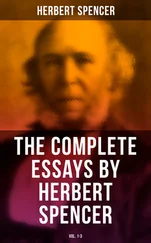Herbert Havell - On the Sublime
Здесь есть возможность читать онлайн «Herbert Havell - On the Sublime» — ознакомительный отрывок электронной книги совершенно бесплатно, а после прочтения отрывка купить полную версию. В некоторых случаях можно слушать аудио, скачать через торрент в формате fb2 и присутствует краткое содержание. Жанр: foreign_antique, foreign_prose, на английском языке. Описание произведения, (предисловие) а так же отзывы посетителей доступны на портале библиотеки ЛибКат.
- Название:On the Sublime
- Автор:
- Жанр:
- Год:неизвестен
- ISBN:нет данных
- Рейтинг книги:3 / 5. Голосов: 1
-
Избранное:Добавить в избранное
- Отзывы:
-
Ваша оценка:
- 60
- 1
- 2
- 3
- 4
- 5
On the Sublime: краткое содержание, описание и аннотация
Предлагаем к чтению аннотацию, описание, краткое содержание или предисловие (зависит от того, что написал сам автор книги «On the Sublime»). Если вы не нашли необходимую информацию о книге — напишите в комментариях, мы постараемся отыскать её.
On the Sublime — читать онлайн ознакомительный отрывок
Ниже представлен текст книги, разбитый по страницам. Система сохранения места последней прочитанной страницы, позволяет с удобством читать онлайн бесплатно книгу «On the Sublime», без необходимости каждый раз заново искать на чём Вы остановились. Поставьте закладку, и сможете в любой момент перейти на страницу, на которой закончили чтение.
Интервал:
Закладка:
active 1st century Longinus
On the Sublime
TRANSLATOR’S PREFACE
The text which has been followed in the present Translation is that of Jahn (Bonn, 1867), revised by Vahlen, and republished in 1884. In several instances it has been found necessary to diverge from Vahlen’s readings, such divergencies being duly pointed out in the Notes.
One word as to the aim and scope of the present Translation. My object throughout has been to make Longinus speak in English, to preserve, as far as lay in my power, the noble fire and lofty tone of the original. How to effect this, without being betrayed into a loose paraphrase, was an exceedingly difficult problem. The style of Longinus is in a high degree original, occasionally running into strange eccentricities of language; and no one who has not made the attempt can realise the difficulty of giving anything like an adequate version of the more elaborate passages. These considerations I submit to those to whom I may seem at first sight to have handled my text too freely.
My best thanks are due to Dr. Butcher, Professor of Greek in the University of Edinburgh, who from first to last has shown a lively interest in the present undertaking which I can never sufficiently acknowledge. He has read the Translation throughout, and acting on his suggestions I have been able in numerous instances to bring my version into a closer conformity with the original.
I have also to acknowledge the kindness of the distinguished writer who has contributed the Introduction, and who, in spite of the heavy demands on his time, has lent his powerful support to help on the work of one who was personally unknown to him.
In conclusion, I may be allowed to express a hope that the present attempt may contribute something to reawaken an interest in an unjustly neglected classic.
ANALYSIS
The Treatise on the Sublime may be divided into six Parts, as follows: —
I. – cc. i, ii. The Work of Caecilius. Definition of the Sublime. Whether Sublimity falls within the rules of Art.
II. – cc. iii-v. [The beginning lost.] Vices of Style opposed to the Sublime: Affectation, Bombast, False Sentiment, Frigid Conceits. The cause of such defects.
III. – cc. vi, vii. The true Sublime, what it is, and how distinguishable.
IV. – cc. viii-xl. Five Sources of the Sublime (how Sublimity is related to Passion, c. viii, §§ 2-4).
(i.) Grandeur of Thought, cc. ix-xv.
a. As the natural outcome of nobility of soul. Examples (c ix).
b. Choice of the most striking circumstances. Sappho’s Ode (c. x).
c. Amplification. Plato compared with Demosthenes, Demosthenes with Cicero (cc. xi-xiii).
d. Imitation (cc. xiii, xiv).
e. Imagery (c. xv).
(ii.) Power of moving the Passions (omitted here, because dealt with in a separate work).
(iii.) Figures of Speech (cc. xvi-xxix).
a. The Figure of Adjuration (c. xvi). The Art to conceal Art (c. xvii).
b. Rhetorical Question (c. xviii).
c. Asyndeton (c. xix-xxi).
d. Hyperbaton (c. xxii).
e. Changes of Number, Person, Tense, etc. (cc. xxiii-xxvii).
f. Periphrasis (cc. xxviii, xxix).
(iv.) Graceful Expression (cc. xxx-xxxii and xxxvii, xxxviii).
a. Choice of Words (c. xxx).
b. Ornaments of Style (cc. xxxi, xxxii and xxxvii, xxxviii).
(α) On the use of Familiar Words (c. xxxi).
(β) Metaphors; accumulated; extract from the Timaeus ; abuse of Metaphors; certain tasteless conceits blamed in Plato (c. xxxii).
[Hence arises a digression (cc. xxxiii-xxxvi) on the spirit in which we should judge of the faults of great authors. Demosthenes compared with Hyperides, Lysias with Plato. Sublimity, however far from faultless, to be always preferred to a tame correctness.]
(γ) Comparisons and Similes [lost] (c. xxxvii).
(δ) Hyperbole (c. xxxviii).
(v.) Dignity and Elevation of Structure (cc. xxxix, xl).
a. Modulation of Syllables (c. xxxix).
b. Composition (c. xl).
V. – cc. xli-xliii. Vices of Style destructive to Sublimity.

(iv.) Improper Use of Familiar Words. Anti-climax. Example from Theopompus (c. xliii).
VI. – Why this age is so barren of great authors – whether the cause is to be sought in a despotic form of government, or, as Longinus rather thinks, in the prevailing corruption of manners, and in the sordid and paltry views of life which almost universally prevail (c. xliv).
INTRODUCTION
Boileau, in his introduction to his version of the ancient Treatise on the Sublime, says that he is making no valueless present to his age. Not valueless, to a generation which talks much about style and method in literature, should be this new rendering of the noble fragment, long attributed to Longinus, the Greek tutor and political adviser of Zenobia. There is, indeed, a modern English version by Spurden, 1 1 Longmans, London, 1836.
but that is now rare, and seldom comes into the market. Rare, too, is Vaucher’s critical essay (1854), which is unlucky, as the French and English books both contain valuable disquisitions on the age of the author of the Treatise. This excellent work has had curious fortunes. It is never quoted nor referred to by any extant classical writer, and, among the many books attributed by Suidas to Longinus, it is not mentioned. Decidedly the old world has left no more noble relic of criticism. Yet the date of the book is obscure, and it did not come into the hands of the learned in modern Europe till Robertelli and Manutius each published editions in 1544. From that time the Treatise has often been printed, edited, translated; but opinion still floats undecided about its origin and period. Does it belong to the age of Augustus, or to the age of Aurelian? Is the author the historical Longinus – the friend of Plotinus, the tutor of Porphyry, the victim of Aurelian, – or have we here a work by an unknown hand more than two centuries earlier? Manuscripts and traditions are here of little service. The oldest manuscript, that of Paris, is regarded as the parent of the rest. It is a small quarto of 414 pages, whereof 335 are occupied by the “Problems” of Aristotle. Several leaves have been lost, hence the fragmentary character of the essay. The Paris MS. has an index, first mentioning the “Problems,” and then ΔΙΟΝΥΣΙΟΥ Η ΛΟΓΓΙΝΟΥ ΠΕΡΙ ΥΨΟΥΣ, that is, “The work of Dionysius, or of Longinus, about the Sublime.”
On this showing the transcriber of the MS. considered its authorship dubious. Supposing that the author was Dionysius, which of the many writers of that name was he? Again, if he was Longinus, how far does his work tally with the characteristics ascribed to that late critic, and peculiar to his age?
About this Longinus, while much is written, little is certainly known. Was he a descendant of a freedman of one of the Cassii Longini, or of an eastern family with a mixture of Greek and Roman blood? The author of the Treatise avows himself a Greek, and apologises, as a Greek, for attempting an estimate of Cicero. Longinus himself was the nephew and heir of Fronto, a Syrian rhetorician of Emesa. Whether Longinus was born there or not, and when he was born, are things uncertain. Porphyry, born in 233 A.D., was his pupil: granting that Longinus was twenty years Porphyry’s senior, he must have come into the world about 213 A.D. He travelled much, studied in many cities, and was the friend of the mystic Neoplatonists, Plotinus and Ammonius. The former called him “a philologist, not a philosopher.” Porphyry shows us Longinus at a supper where the plagiarisms of Greek writers are discussed – a topic dear to trivial or spiteful mediocrity. He is best known by his death. As the Greek secretary of Zenobia he inspired a haughty answer from the queen to Aurelian, who therefore put him to death. Many rhetorical and philosophic treatises are ascribed to him, whereof only fragments survive. Did he write the Treatise on the Sublime? Modern students prefer to believe that the famous essay is, if not by Plutarch, as some hold, at least by some author of his age, the age of the early Caesars.
Читать дальшеИнтервал:
Закладка:
Похожие книги на «On the Sublime»
Представляем Вашему вниманию похожие книги на «On the Sublime» списком для выбора. Мы отобрали схожую по названию и смыслу литературу в надежде предоставить читателям больше вариантов отыскать новые, интересные, ещё непрочитанные произведения.
Обсуждение, отзывы о книге «On the Sublime» и просто собственные мнения читателей. Оставьте ваши комментарии, напишите, что Вы думаете о произведении, его смысле или главных героях. Укажите что конкретно понравилось, а что нет, и почему Вы так считаете.





